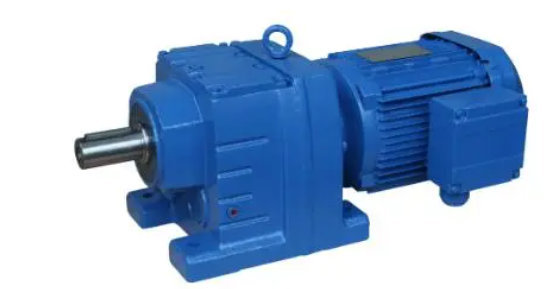Internal structure and function of helical gear worm gear reducer

The helical gear worm gear reducer is a commonly used transmission device that transmits the power of the high-speed rotating input shaft to the output shaft through the meshing of gears, thereby achieving the effect of deceleration. It consists of three important parts: helical gear, worm gear, and worm gear. Below, we will provide a detailed introduction to the internal structure and function of the helical gear worm gear reducer.
The helical gear is the driving gear of the reducer, which transmits the power of the input shaft to the worm gear. A helical gear is usually composed of multiple gears with different numbers and profiles of teeth. Through proper pairing, different transmission ratios can be achieved. Spiral gears are generally made of high-strength alloy steel materials to ensure their strength and wear resistance.
Worm gears and worm gears are passive transmission components of reducers. The worm gear is a cylindrical body with helical teeth, and the worm gear is a cylindrical body that matches it. When the helical gear drives the worm wheel to rotate, the helical teeth of the worm wheel will bite the worm, causing the worm to rotate accordingly. The transmission mode of worm gear and worm gear is achieved through rolling friction, so their transmission efficiency is slightly lower compared to gear transmission. However, due to the structural characteristics of worm gears and worms, they can achieve large reduction ratios, generally between 5 and 100, and are therefore widely used in situations where large reduction ratios are required.
The output shaft and housing of the gearbox. The output shaft is the output part of the reducer, which is directly connected to the worm gear and transmits the working load through the output shaft. The output shaft usually needs to undergo processes such as heat treatment and surface hardening to improve its strength and wear resistance. The outer shell is the protective shell of the gearbox, which can prevent dust, moisture, and other impurities from entering the interior of the gearbox, and also prevent damage to the main components.
The internal structure of a helical gear worm gear reducer includes important components such as helical gears, worm gears, worm gears, output shafts, and housings. They work together, and through reasonable transmission design and high-quality material manufacturing, the reducer can achieve efficient power transmission and deceleration. Nowadays, helical gear worm gear reducers are widely used in the field of mechanical transmission, providing reliable power support for production in various industries.

